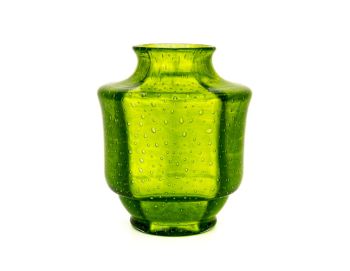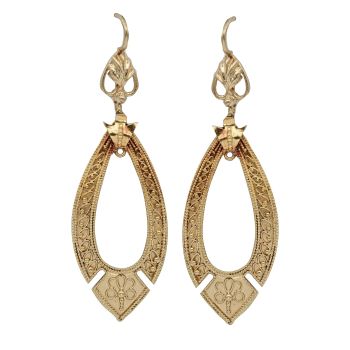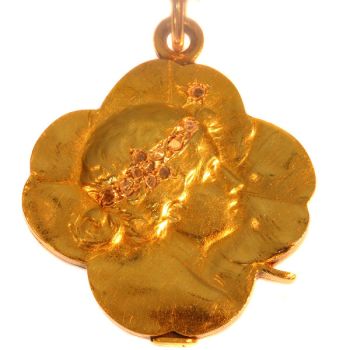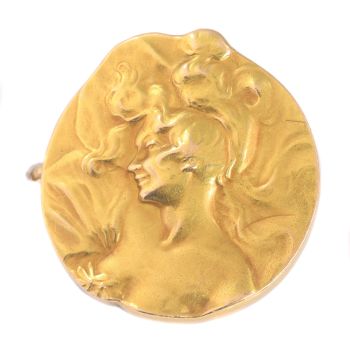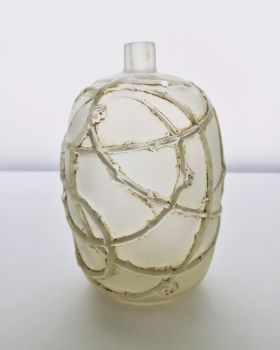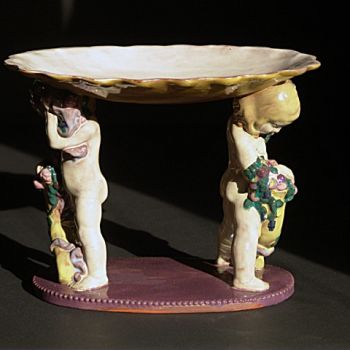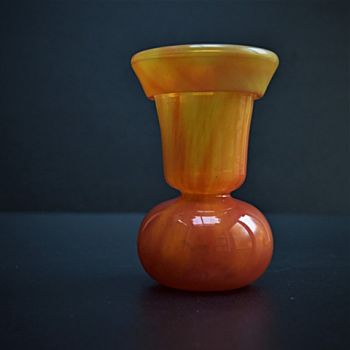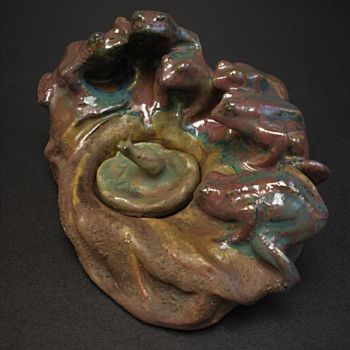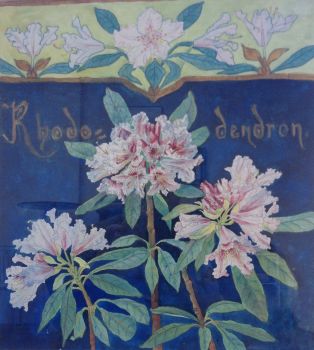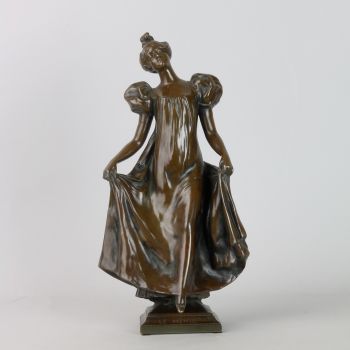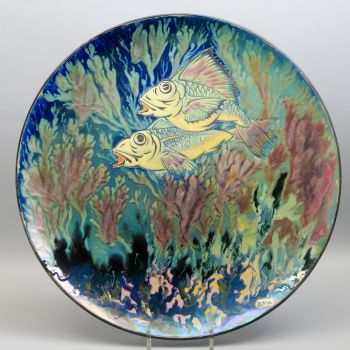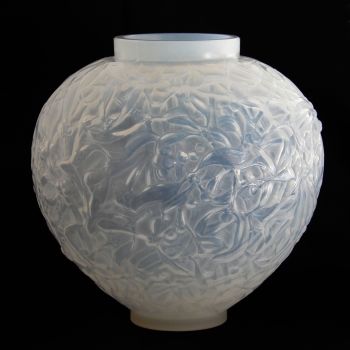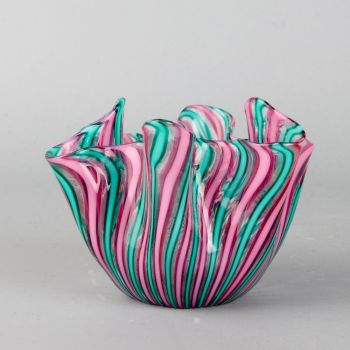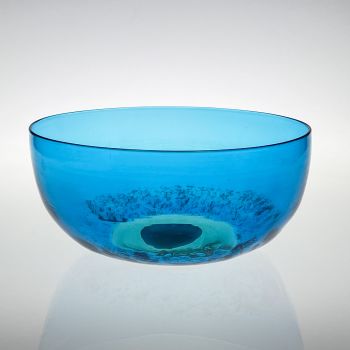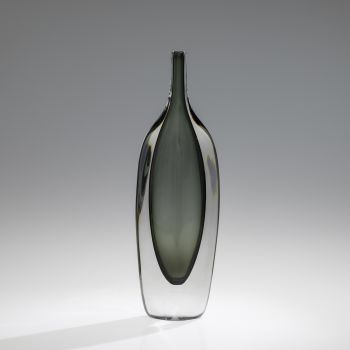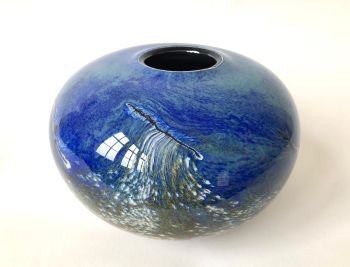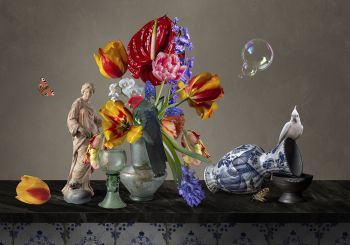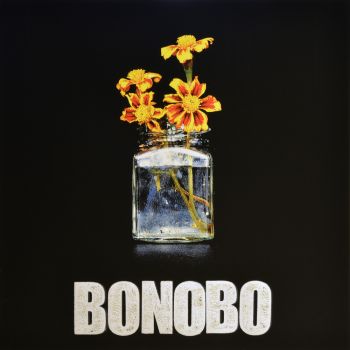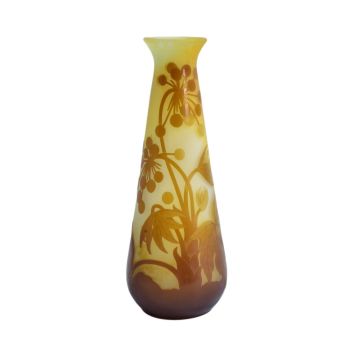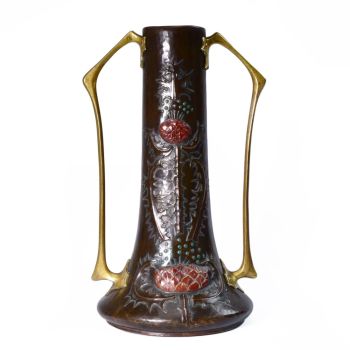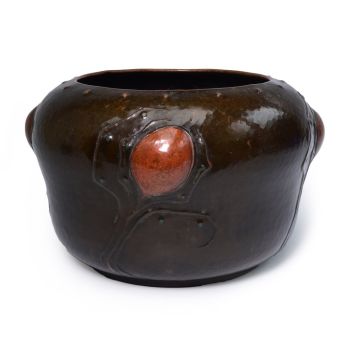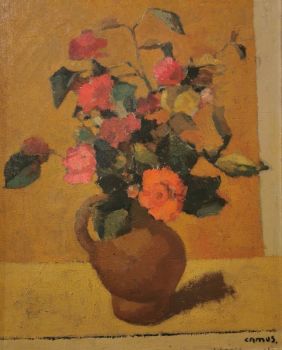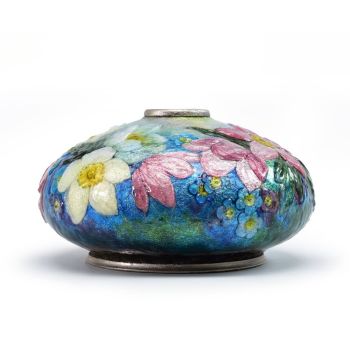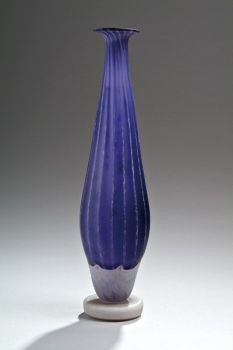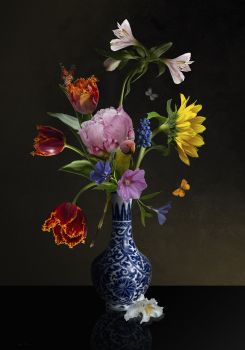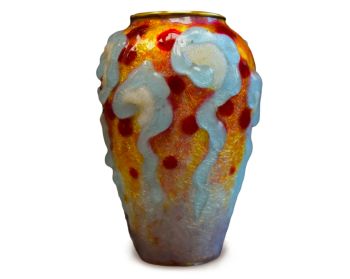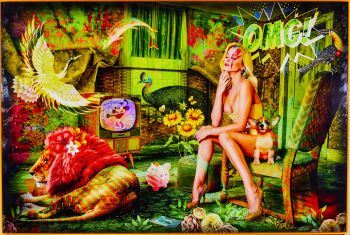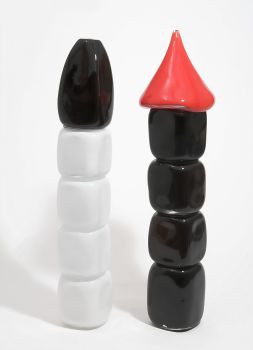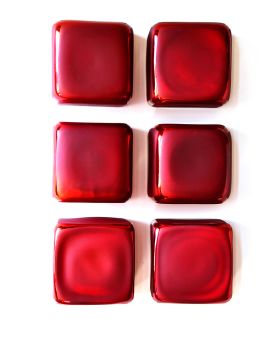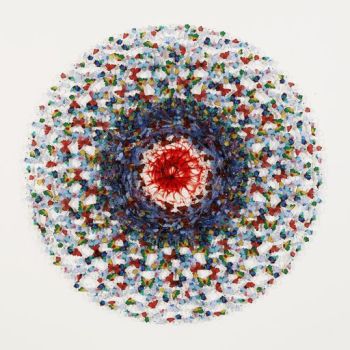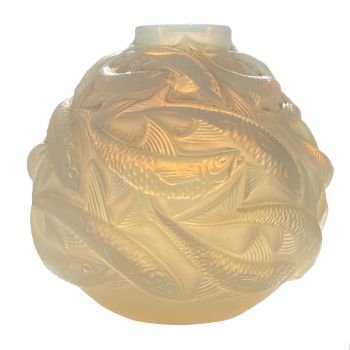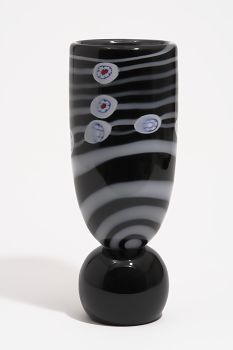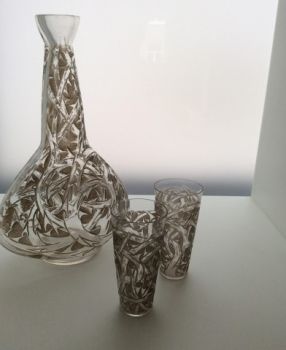Johann Loetz Witwe – Phänomen Genre 2 / 177 Jugendstil vaas – 1902 1900 - 1909
Johann Loetz (Lötz) Witwe Klostermühle
Glass
19 ⨯ 20 cm
ConditionMint
Price on request
Antiques Emporium
- About the artworkDeze Johann Loetz Witwe vaas uitgevoerd in Phänomen Genre 2/177 is een schitterend voorbeeld van vroeg 20e-eeuws glaskunst. Dit specifieke Phänomen-genre, geïntroduceerd in 1902, kenmerkt zich door zijn unieke en fascinerende ontwerpelementen. De vaas heeft een basiskleur van opaal die dient als het canvas voor zijn ingewikkelde decoratie. Op deze opalen ondergrond bevinden zich zilvergele iriserende stippen die een opvallend visueel contrast creëren en diepte aan het stuk toevoegen.
Een van de meest onderscheidende kenmerken van deze vaas is de omtreksband van gekamde en geknepen blauwe draden. Deze band wikkelt zich rondom het lichaam van de vaas en toont het vakmanschap en de artistieke flair waarvoor Johann Loetz Witwe bekend stond. De techniek die gebruikt is om dit patroon te creëren resulteert in een dynamisch, bijna vloeibaar ontwerp dat lijkt te dansen over het oppervlak van de vaas.
Aan de elegantie van dit object dragen ook de twee aangehechte oren uitgevoerd in Silberiris bij, dit is een type irisatie die Loetz toepaste op het glas. Deze oren zijn zorgvuldig aan het lichaam van de vaas bevestigd en verbeteren de algehele esthetiek en functionaliteit. De irisatie van het glas is uitzonderlijk sterk, wat de vaas een lumineuze kwaliteit geeft die verandert met de hoek van het licht en een betoverend effect creëert.
De dikte van het glas van deze vaas is opvallend dikker dan normaal, wat bijdraagt aan zijn duurzaamheid en hoge kwaliteit. Deze substantiële dikte zorgt niet alleen voor een solide gevoel, maar versterkt ook de diepte en rijkdom van de kleuren, waardoor deze vaas een werkelijk opmerkelijk stuk is en onderscheidend is van andere identieke uitvoeringen.
Afmetingen:
Hoogte: 195mm / 7.68″
Diameter opening: 115mm / 4.53”
Breedte oren: 200mm / 7.87”
Literatuur:
Prestel – Böhmisch Glas 1880 – 1940 Band 1 Werkmonographie – Blz. 335.
Hatje Cantz – Loetz Bohemian Glass 1880 – 1940 – Blz. 306. - About the artist
Lötz/Loetz was founded by Johann Lötz in 1840 and was a company based in Bohemia, in the Czech Republic, at the time Lötz belonged to the Empire of Austria-Hungary. In 1879, a grandson of Lötz, Max Ritter-Von Spaun, took over the business from his grandmother and kept the name Joh. Lötz Witwe.
From that moment on, Johann Lötz Witwe really started to make a name for itself, they developed new innovative glass techniques, but their design and bright colors were also completely innovative. They designed special shapes and vases, luxury items, which they sold in luxury shops in Vienna, Berlin, Hamburg, Paris, London, Milan, Brussels and Madrid. It soon made them very well known and famous.
It was the period that Art Nouveau or as it was called in Germany Jugendstil flourished. They used organic shapes, nature was their example, also for Lötz, they developed beautiful decors, resembling butterfly wings, such as the papillon decor of this vase, often the shapes were formed organically by using tongs to shape the hot glass unevenly , as also flowers are formed. But also an octopus or sea shells were taken as examples for their special vases and decors.
Lötz participated in all kinds of World Exhibitions, including the famous World Exhibition of 1900 in Paris where they won the Grand Prize. They were awarded numerous prizes for participation in World Exhibitions. Max Ritter von Spaun also received special awards for his contribution to the glass industry, in 1883 he was allowed to use the Imperial eagle in their shield and seal, they were also allowed to use K.K. Put Private Glass Factory in front of their name. In 1889 he also received a knighthood from Franz Josef. But other royal houses were also involved. He received the Belgian Order of Leopold and the honorable French Legion d'Honneur.
Their designs were popular, also in the United States. Tiffany worked with Lötz on the Favril set. Lötz patented some of their special techniques, such as the one they used to make the Phänomen decor. They were able to make iridescent glass. In short, Lötz had become a household name. And it still is.
Lötz also worked closely with other glass manufacturers such as J.&L. Lobmeyer and E. Bakolowits Söhne in Vienna and with Argentor. In addition, Lötz worked closely with various artists, such as Josef Hoffmann, Koloman Moser, Franz Hofstötter, Michael Powolny and other artists from the Wiener Werkstätte. Michael Powolny was responsible for the much tighter tango vases of the 1920s.
The First World War and the end of the Austrian Empire meant a difficult period for Lötz.
Lötz existed until 1940, after a bombing raid the factory was completely burnt down. After WWII, the Czech Republic belonged to the satellite states of the Soviet Union, the factory was nationalized until it was finally closed in 1947.Lötz glass is still very popular and is collected worldwide, in addition, their oeuvre can also be found in many museum collections.
Are you interested in buying this artwork?
Artwork details
Related artworks
Johann Loetz (Lötz) Witwe Klostermühle
Johann Loetz Witwe – Jugendstil Cobalt Papillon vaas1900 - 1910
Price on requestAntiques Emporium
Johann Loetz (Lötz) Witwe Klostermühle
Johann Loetz Witwe - Phänomen Genre 7773 – Orange1900 - 1910
Price on requestAntiques Emporium
1 - 4 / 8- 1 - 4 / 24
Johann Loetz (Lötz) Witwe Klostermühle
Johann Loetz Witwe - Phänomen Genre 7773 – Orange1900 - 1910
Price on requestAntiques Emporium
Gabriel Argy-Rousseau
Gabriël Argy-Rousseau – Crabes et Algues vase – 19201920 - 1929
Price on requestAntiques Emporium
1 - 4 / 24Johann Loetz (Lötz) Witwe Klostermühle
Johann Loetz Witwe - Phänomen Genre 7773 – Orange1900 - 1910
Price on requestAntiques Emporium
Johann Loetz (Lötz) Witwe Klostermühle
Johann Loetz Witwe – Jugendstil Cobalt Papillon vaas1900 - 1910
Price on requestAntiques Emporium
1 - 4 / 24- 1 - 4 / 24
Frères Daum
Daum Nancy – “Paysage Soleil Couchant” vase with two applied handles1900 - 1910
Price on requestAntiques Emporium
Johann Loetz (Lötz) Witwe Klostermühle
Johann Loetz Witwe – Jugendstil Cobalt Papillon vaas1900 - 1910
Price on requestAntiques Emporium
Gabriel Argy-Rousseau
Gabriël Argy-Rousseau – Crabes et Algues vase – 19201920 - 1929
Price on requestAntiques Emporium
Johann Loetz (Lötz) Witwe Klostermühle
Johann Loetz Witwe - Phänomen Genre 7773 – Orange1900 - 1910
Price on requestAntiques Emporium
1 - 4 / 12
















